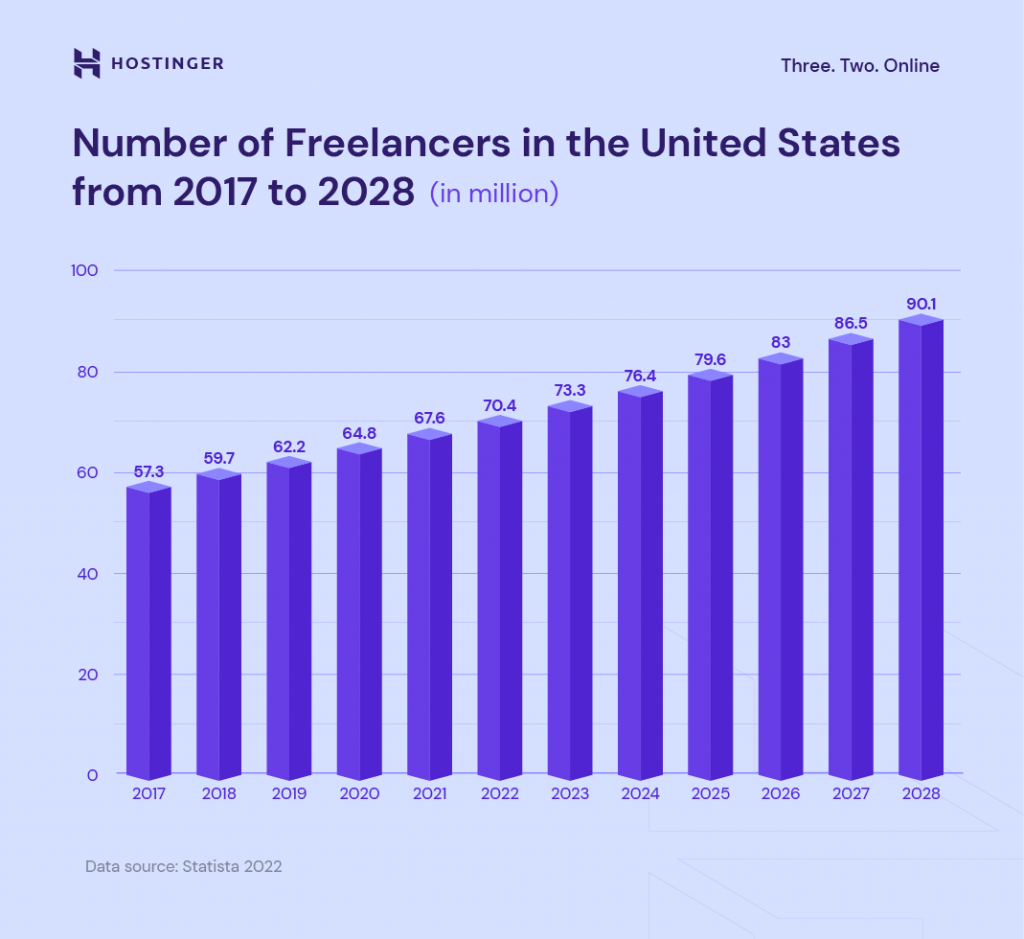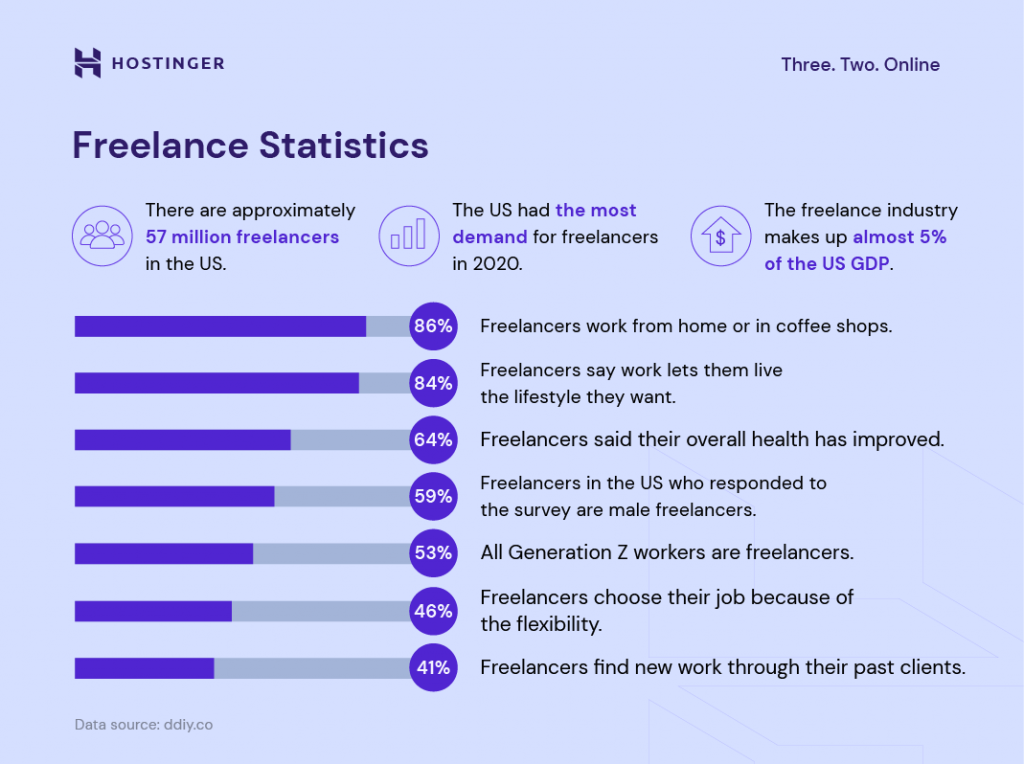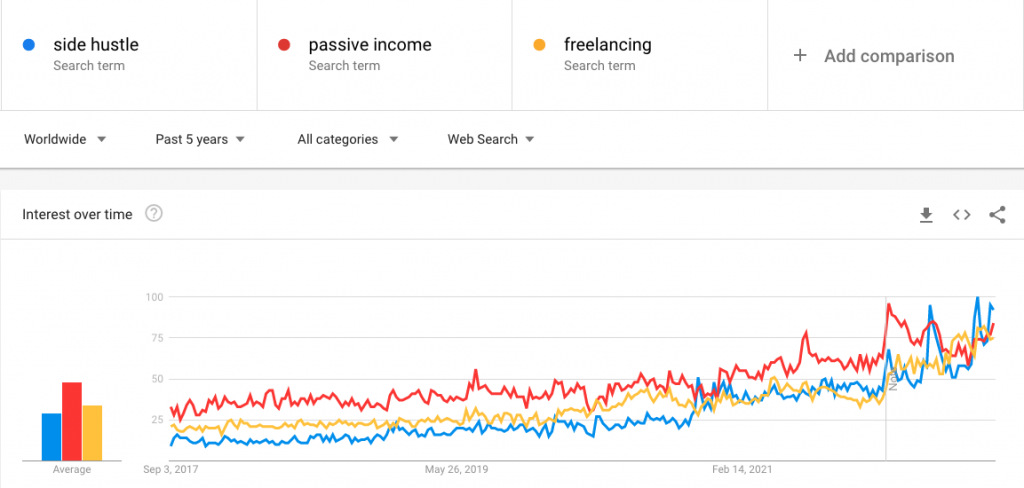Freelancer Frenzy: When the Side Hustle Becomes the Constant

As a concept, freelancing refers to hiring temporary workers, such as copywriters, graphic designers, online tutors, and web developers. But not only in the IT sector. It also entails everyone from pop-up baristas and language tutors to drivers for one of the many travel apps available.
No wonder freelancing has become a primary source of income for many people as they enjoy the independence of the freelance economy.
In 2022, freelancing can mean any sort of work that goes against the traditional 9-5 structures. Covid-19 and the worry of impending recessions, to name a few global anxieties, have contributed to the current freelance climate. As a result, many flexible jobs and side hustle opportunities that seemed implausible even a decade ago have emerged.
Table of contents
Why Freelance Work?
The Bureau of Labor Statistics research showed that the percentage of people quitting their job rose from 1.6 % in April 2020 to 6.4 % in August 2021. The most significant shift is that many people are not moving onto a new payroll company but leaving for freelance independence.
After falling 7% in 2020, mainly due to the pandemic, the overall number of independent workers grew sharply in 2021: up 34%, to 51.1 million from 38.2 million in 2020. The larger group of part-time independents, who regularly work fewer than 15 hours per week, rose 39%, or 9.1 million, from 24.6 million to 34.1 million. The fastest growing segment of Part-Time Independent is so-called occasional independents—people who work regularly but part-time and without set hours. Their numbers rose sharply, from 15.8 million in 2020 to 23.9 million in 2021, up 51%.
With doors open to working in co-spaces, allowing networking and sharing ideas, many people get more creative. Furthermore, young people understand they may not be able to afford a mortgage, opting for work that frees them to travel and see the world.
And so the pull for freelance makes sense; choosing one’s hours, working spaces, and clients.
Success stories such as running a boutique gym or finding a flair in design have opened doors for many niche ideas to come alive. The latter is possible through people creating their own websites to promote their businesses or hiring a web designer and keeping the freelance economy turning.
It might sound pretty simple, but the necessity of the internet in everyday life is the driving force behind freelance work culture. Remote working impacts this heavily; “In the United States alone, more than 4.7 million people work remotely at least half the time in the United States. 44% of companies do not allow remote work, and 16% of companies hire remote only workers.”
Without guaranteeing a stable and secure job as it was once known, many began to loom inwards at their knowledge base and how they could apply it.
Why Is the Freelance Economy Flourishing?
The development of technology, in particular, the use of apps to buy and sell goods online as well as connect customers with freelancers worldwide, has enabled more individuals to pursue their passions outside regular working hours.
Covid-19 has blurred the lines at work and helped people be more prone and start doing business online.
In many traditional workplaces, flexible work is available for at least a day or two per week. It is becoming the norm. As a result, companies uncompromising in this are deemed unattractive to prospective employees.
Data Speaks Volumes
The eCommerce industry statistics prove that the industry is booming. Let’s go into more detail:
- There are approximately 57 million freelancers in the US.
- An estimated 59% of freelancers in the US who responded to the survey are male freelancers.
- 86% of freelancers work from home or in coffee shops.
- 84% of freelancers say work lets them live the lifestyle they want.
- 64% of freelancers said their overall health has improved.
- 46% of freelancers choose their job because of the flexibility.
- 41% of freelancers find new work through their past clients.
- The US had the most demand for freelancers in 2020.
- The freelance industry makes up almost 5% of the US GDP.
- 53% of all Generation Z workers are freelancers.
Changing Landscapes, Changing Terms
In the past five years, the phrase side hustle rose from 11% to 75%, freelancing from 20% to 82%, and passive income from 28% to 75%. This Google Trends data represents search interest relative to the highest point on the chart for the given region and time.
(A value of 100 is the peak popularity for the term. A value of 50 means that the word is half as popular. A score of 0 means there was not enough data for this term)
Why Freelancing Is The Future
Recessions and global pandemics aside, the future of freelancing feels full of promise. There is constant growth in co-working spaces, with more nuanced professions, such as bespoke PR and creative web design. There is a distrust in the air with employee engagement down with more than 600 US businesses with 50-500 employees; 63.3% of companies say retaining employees is more demanding than hiring them.
News travels fast; in the younger generations, the feeling that there are possibilities lying outside the traditional workplace has spurred the freelance movement forward.
The increase has risen rapidly, and the industry keeps moving faster. In the United States alone, 58 million people regularly perform freelance work, with $1.2 trillion from freelance contributions to the United States economy.
According to McKinsey, 500 million freelancers will be working through platforms to make money online before 2030. Not only is becoming freelance a way to be completely independent with your time, resources, and skills, but these statistics show a healthy marketplace growing each year.






